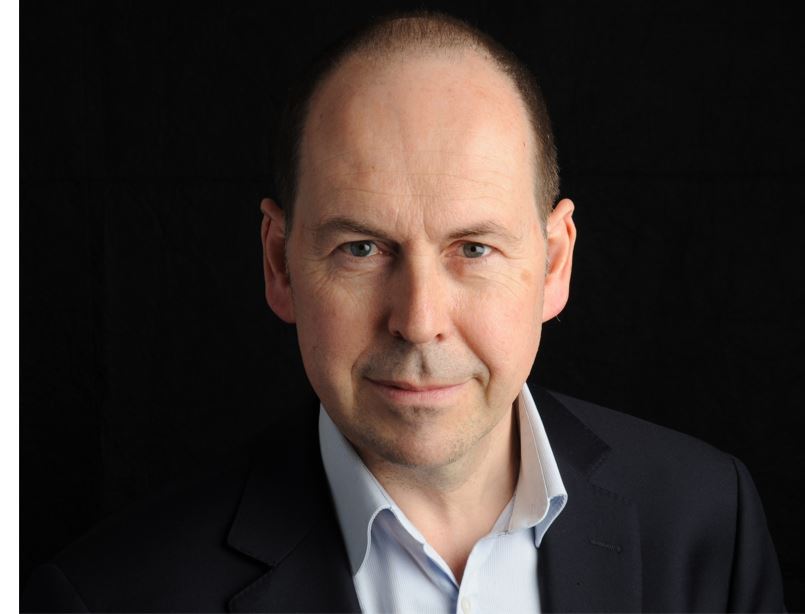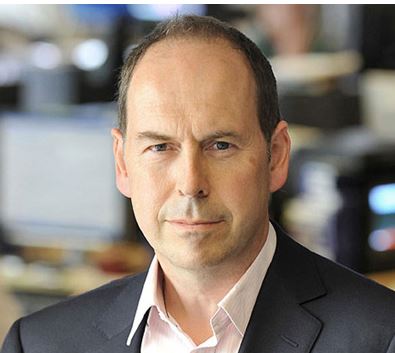Rory Cellan-Jones Biography
Rory Cellan Jones initially named Nicholas Rory Cellan Jones is a British journalist who specializes in economics and technology for BBC News.
How old is Rory Cellan-Jones? – Age
Cellan Jones was born on 17 January 1958 in London. He is 63 years as of 2021.
Where did Rory Cellan -ones go to school? – Education
Cellan-Jones attended Dulwich College, a private boys’ school in Dulwich, south London, from 1967 to 1976. He went to Jesus College in Cambridge, where he earned a BA in Modern and Medieval Languages in 1981 and an automatic MA three years later.
Rory Cellan-Jones – Family
Rory was born out of wedlock and only met his father’s family when he was an adult. His father had an affair with his mother in 1959, before his father’s marriage to Margot Eavis, a television editor, and production manager. His father died on August 30, 2019, at the age of 88, as a result of a stroke. Cellan-Jones has two half-siblings: Simon Cellan Jones, a film director, and Deiniol Cellan Jones, a barrister.
Rory’s Wife
Diane Coyle is Cellan-Jones’ wife. His wife is a writer and an economist. She was also a former UK Treasury advisor. From 2001 until 2019, Diane served as vice-chairman of the BBC Trust, the governing body of the British Broadcasting Corporation, as well as a member of the UK Competition Commission. She has been the Bennett Professor of Public Policy at the University of Cambridge since March 2018, where she also co-directs the Bennett Institute. The couple has two boys and lives in London’s West Ealing district. They have a grandchild as well.

What are Rory’s Salary and Net worth?
His salary is being reconsidered. However, his net worth is believed to be between $1 and $5 million.
Rory Career
He began his BBC career as a researcher on the Leeds version of Look North, then spent three years in the London TV newsroom before landing his first on-screen position at BBC Wales. He then moved to London and worked as a business and economics correspondent for The Money Programme between 1990 and 1992.
He wrote the book, Dot. bomb after the dot.com meltdown in 2000. He has written on Black Wednesday, the BCCI crisis, and Marks and Spencer’s competitive difficulties. He has assessed the expansion of websites and internet firms, such as the emergence of Google and Wikipedia, as well as the increase of online commerce. He has been the BBC’s technology reporter since January 2007, with the responsibility of increasing the BBC’s coverage of new media and telecoms, as well as the cultural effect of the Internet. ‘Stop the NUJ Boycott’ was established in April 2007 as “a campaign seeking a poll of NUJ members on the union’s position on a boycott of Israeli goods.”
Following his presentation of the first BBC transmission over a 5G network on 30 May 2019, Cellan-Jones stated through Twitter that he had been diagnosed with early Parkinson’s disease, but that he planned to continue as usual.
Rory’s Publications
Dot.Bomb: The Rise and Fall of Dot.com Britain (London: Autumn, 2001)
The Secret History of Social Networking (BBC, 2012)
With Mike Hally, Patently Absurd (Audio, 2013)
Always On: Hope and Fear in the Social Smartphone Era (Bloomsbury Continuum, 2021).
Rory Cellan-Jones Parkinson’s disease
Cellan Jones was diagnosed with Parkinson’s disease in January 2019. His dragging foot, his first ailment, became obvious on a vacation with Diane in 2018, he claimed. When he got home, he went to visit his doctor, who sent him to a neurologist. “Around the same time, someone wrote to the BBC and said they had observed my quivering hand in one of my broadcasts and advised I get it checked,” Rory said. He had his own suspicions at that point, so the eventual diagnosis “wasn’t a bolt from the blue.” There is no cure for Parkinson’s disease. Rory, on the other hand, was unfazed by this news, despite the fact that he had previously been diagnosed with something far worse. In 2005, he was diagnosed with choroidal melanoma, a rare kind of cancer that was developing near the retina behind his eye. “Being told about the cancer was scary, which is why Parkinson’s didn’t seem so horrible,” he added. “It didn’t appear to be immediately life-threatening, as cancer may.” Cellan-Jones has a regimen to follow in order to control the symptoms. “The exercises I did each morning – twisting my hand from side to side, holding it out in front of me, moving my arm up and down – were identical to what my consultant requires of me on my four-month visits.” The idea is that the data collected by the sensors, as well as the video of the session, would progressively educate the AI system how to grade symptoms in the same way that a human doctor would.”
